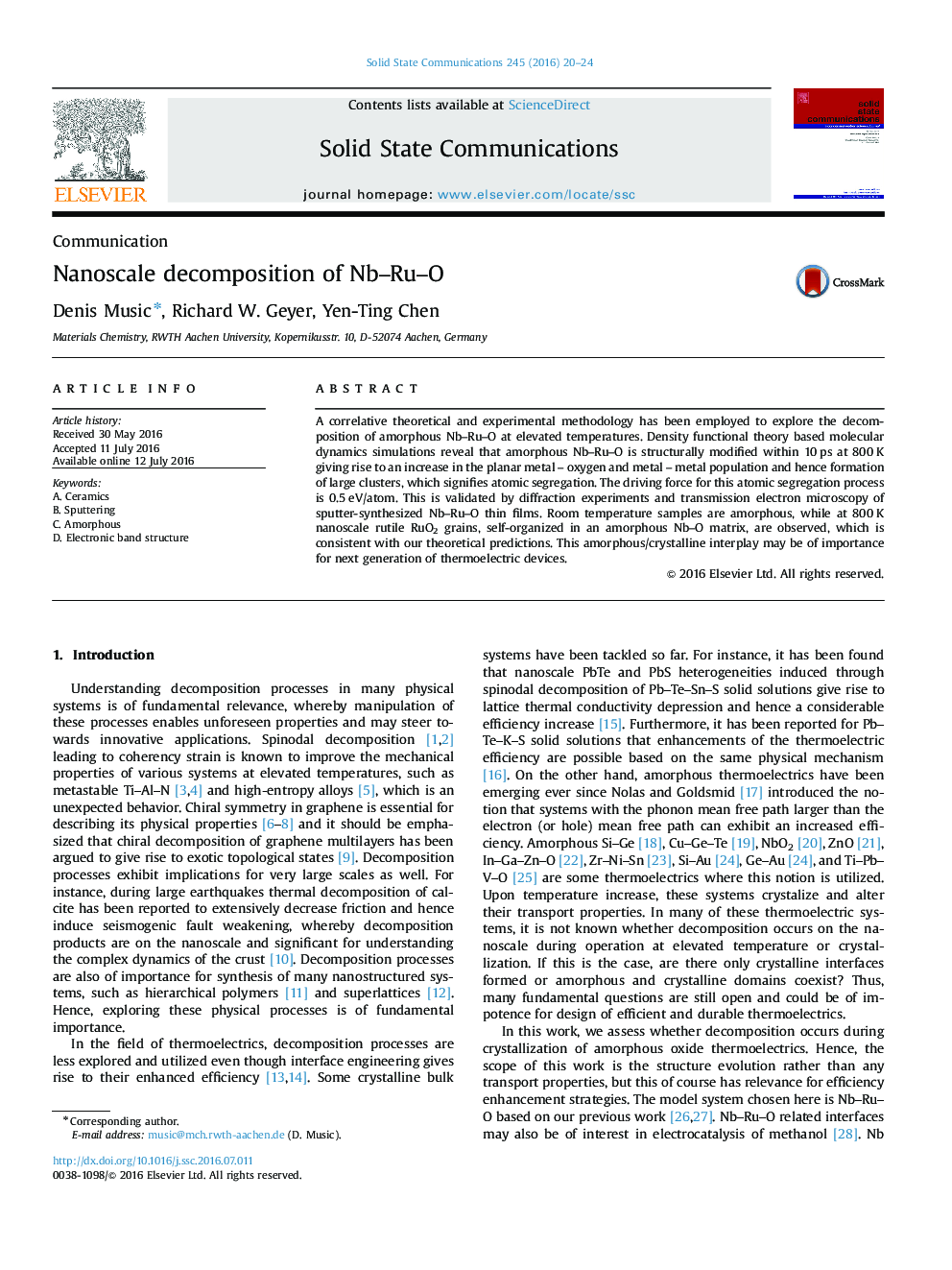| Article ID | Journal | Published Year | Pages | File Type |
|---|---|---|---|---|
| 1591055 | Solid State Communications | 2016 | 5 Pages |
Abstract
A correlative theoretical and experimental methodology has been employed to explore the decomposition of amorphous Nb-Ru-O at elevated temperatures. Density functional theory based molecular dynamics simulations reveal that amorphous Nb-Ru-O is structurally modified within 10Â ps at 800Â K giving rise to an increase in the planar metal - oxygen and metal - metal population and hence formation of large clusters, which signifies atomic segregation. The driving force for this atomic segregation process is 0.5Â eV/atom. This is validated by diffraction experiments and transmission electron microscopy of sputter-synthesized Nb-Ru-O thin films. Room temperature samples are amorphous, while at 800Â K nanoscale rutile RuO2 grains, self-organized in an amorphous Nb-O matrix, are observed, which is consistent with our theoretical predictions. This amorphous/crystalline interplay may be of importance for next generation of thermoelectric devices.
Related Topics
Physical Sciences and Engineering
Materials Science
Materials Science (General)
Authors
Denis Music, Richard W. Geyer, Yen-Ting Chen,
